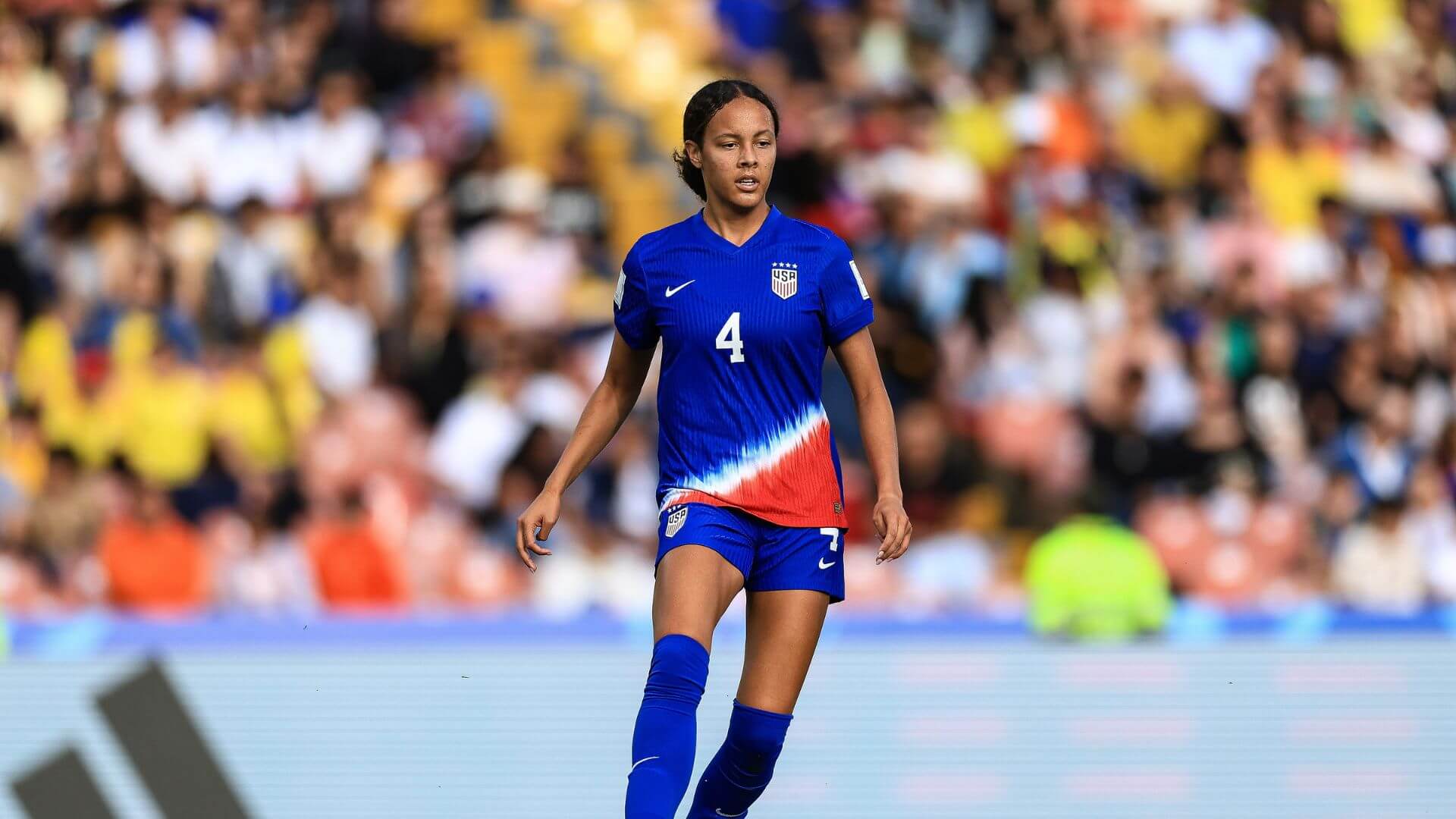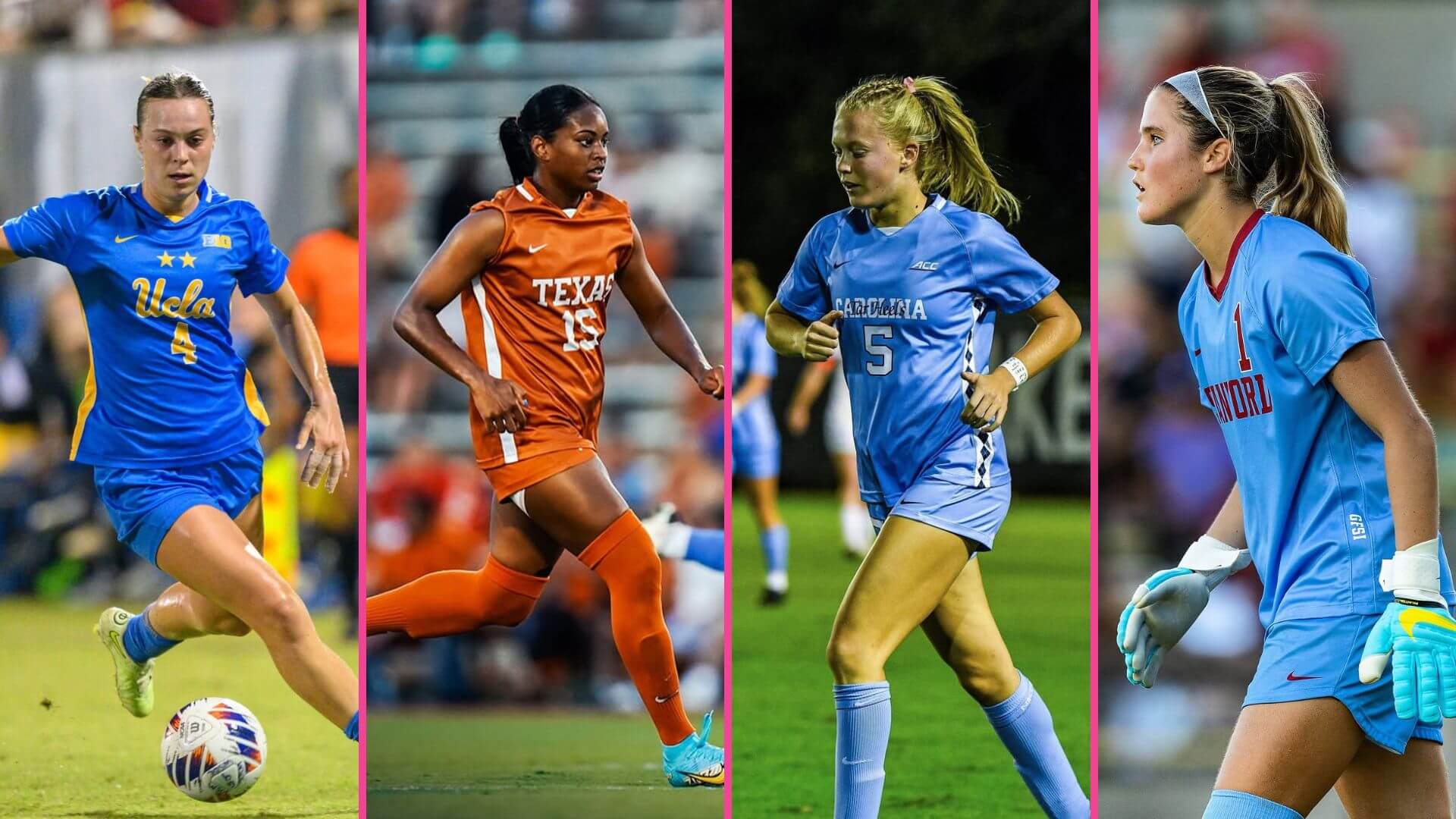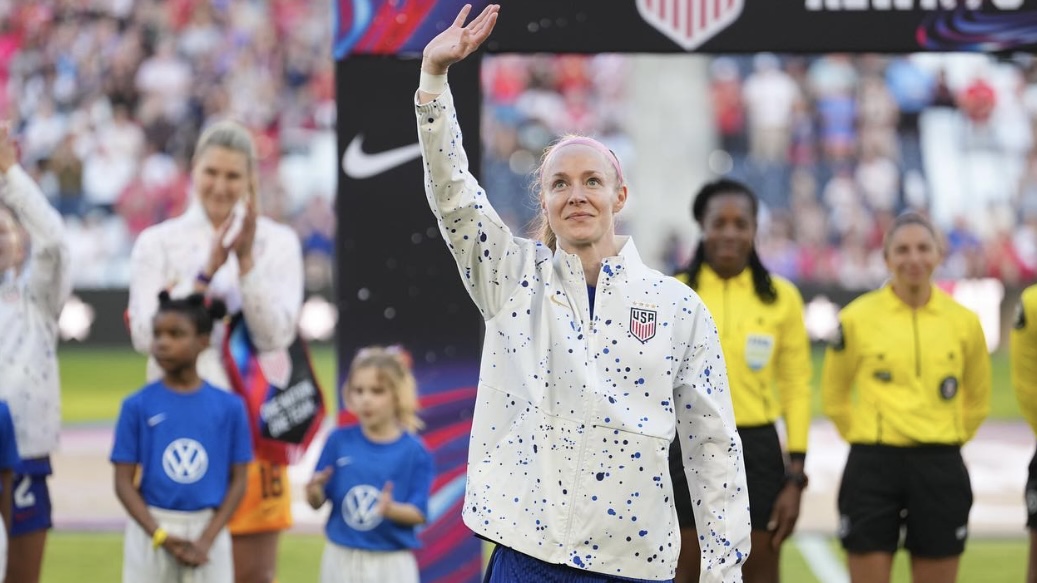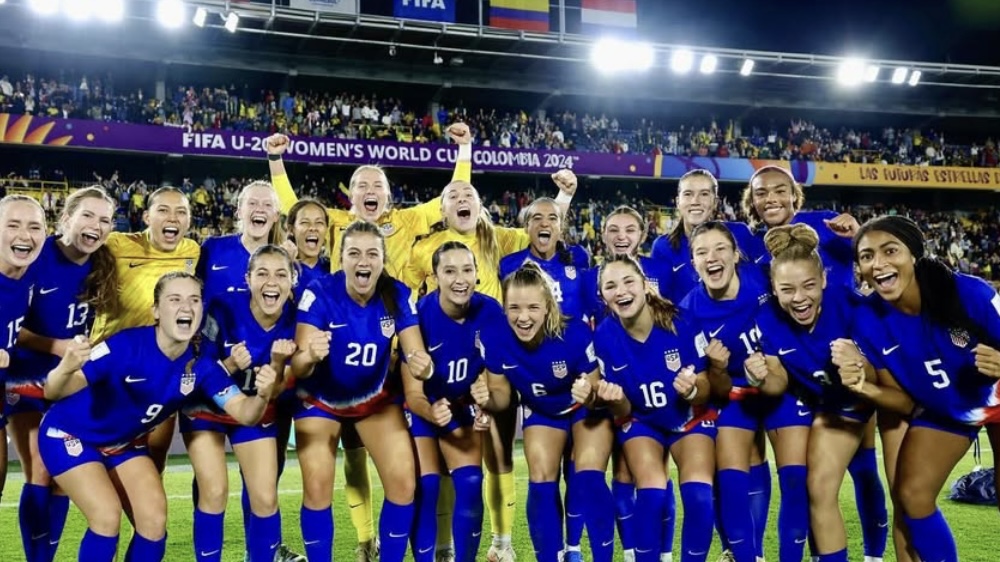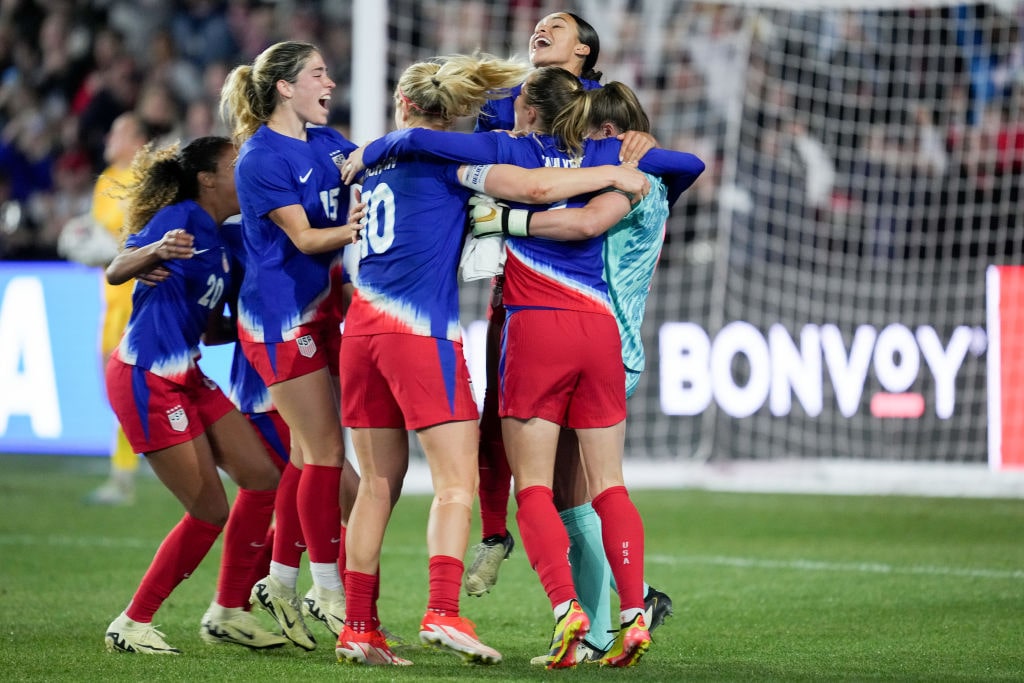Rose Lavelle: The Introvert Behind The Bronze Ball Winner
High school graduation should be a triumphant moment, a time when four years of hard work culminate in one event of recognition and celebration.
That’s what it should be.
But, for US Women’s National Team star Rose Lavelle, it was a moment of embarrassment. It was May 2013, and every student at Mt. Notre Dame High School was packed into the building’s auditorium. As the assembly began, principal Maureen Baldock took the stage, and, as the crowd of assembled students quieted down, she called one of them to join her.
As eyes across the room turned towards her, Lavelle waddled onstage. She would be missing her own graduation ceremony a few weeks later, instead spending the day playing for the Under-20 Women’s National Team.
As the whole school watched, Lavelle rose, and, in a moment of academic triumph for the standout soccer star who had recently been named Cincinnati’s High School Female Athlete of the Year, she accepted her diploma onstage.
“She hated every minute of that,” Donna Groene, Lavelle’s high school homeroom and religion teacher, said.
“You can almost imagine how happy it would make someone like Ronaldo to get his own graduation ceremony. She’s the absolute opposite. She was probably utterly mortified by the idea,” said Benn VanOudenallen, her former geography teacher. “If anything, she’s like ‘okay, let’s get this done as soon as possible.’”
This is the paradox of Lavelle. After receiving the Bronze Ball and scoring an awe-inspiring solo goal to seal her team’s championship, she stands at the pinnacle of the women’s game.
Yet, Lavelle has always been more comfortable sharing the spotlight than standing directly in it.
In our interview, VanOudenallen posed the question that must be asked.
“How did this introverted kid get that attacking mentality?”
A lighthearted approach to everything except soccer
Two days after their World Cup victory, Lavelle and teammate Kelley O’Hara made an appearance on CNN to discuss their win. As O’Hara answered a question, Lavelle choked on her water and started giggling on national television. In that moment, VanOudenallen recognized his former student.
“There’s no artifice there at all. She’s the opposite of slick,” he said.
To understand Lavelle’s personality, it is perhaps easiest to look at her relationship with her best friend, Wilma.
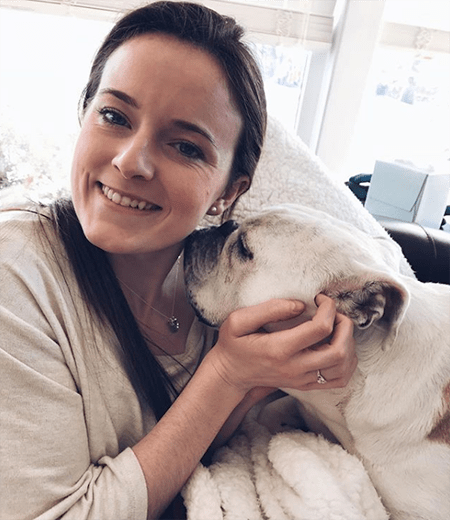
Wilma, an English Bulldog whom Lavelle considers a sister, was the subject of a 2014 USWNT video in which the center midfielder introduced the world to her best friend. Wilma now features regularly on her own Instagram page, which, with its 160 posts dating back to 2014, now has more than 5,000 followers.
Lavelle, in the USWNT video, who is wearing a customized shirt with Wilma’s body on it, describes the bulldog as the toughest defender she has ever faced.
“She doesn’t fall for any tricks,” Lavelle said. “She just keeps her eye on the ball.”
Naturally, Jodi Folzenlogen, Lavelle’s best human friend and cousin, initially took offense at the description of Wilma as the UW-Madison graduate’s best friend.
“She loves that dog so much,” Folzenlogen said. “I’ve seen the video of Rose introducing her best friend and I’m like, wait, that’s me. She does love that dog so much, so I totally get it.”
Lavelle brings this love of dogs with her wherever she goes, from her home in Cincinnati to Wisconsin to the ticker tape parade in New York City to celebrate the USWNT’s World Cup win.
“Any time someone wanted to walk down State Street and pet dogs, they would go to Rose,” Marisa Krezge, her teammate at the University of Wisconsin, said.
It was the same after the World Cup win, as her teammates rode through the streets of Manhattan as thousands of fans celebrated the world champions.
“Saw a lot of dogs today at the parade,” Lavelle wrote on Instagram. “Good job everyone.”
Outside of her love of dogs, Lavelle’s personality is characterized by a more mischievous side, according to Folzenlogen. In Groene’s classroom, where food was banned, she would sneak in Skittles, and, when Folzenlogen lost bets to her cousin, she would have to publicly embarrass herself.
“If you lose a bet to her, you obviously have to do it,” she said. “Once, she made me yell ‘Merry Christmas’ to everyone as I stood in the mall above the food court.”
On another occasion, Folzenlogen, who proudly knows little about soccer and admits to being out of shape, tagged along with Lavelle to a Mt. Notre Dame conditioning session. Lavelle told the trainer that her cousin was a visiting professional, and he spent the entire practice trying to take tips from her.
Ultimately, it is this lighthearted humor that characterizes Lavelle’s social media presence, and it is what many in her life, including Scott Rodgers, her former coach at Cincinnati United Soccer Club, attest to.
“She’s lighthearted. She enjoys life, the same as she enjoys the game,” Rodgers said. “She just sees things differently than other people.”
This was no dream — it was always going to be…
Around the hallways of Mt. Notre Dame High School, VanOudenallen is known as “The Fifth Horseman of the Apocalypse.”
That’s because, each spring, he speaks with the senior religion class and, in the midst of discussing networking and career paths, he explains to them that they should enjoy the following summer because it will likely be the last summer with no responsibilities of their lives.
This talk got Folzenlogen thinking. She knew she loved animals and that she wanted to become a veterinarian, but she didn’t know how. So, she went to VanOudendallen’s room after school. Of course, as Folzenlogen’s best friend and cousin, Lavelle tagged along.
After talking Folzenlogen through her path, VanOudendallen turned to Lavelle to inquire about her career plans.
“And Rose says, ‘soccer.’ I said, ‘Rose, that’s awesome, and you’re really good. You’re going to get a free degree. That’s phenomenal.” VanOudenallen said. “’Now when that’s over, what are you thinking?’”
The truth was that Lavelle was never looking past soccer. At the time, VanOudenallen was incredulous.
“I explained to her that one tenth of one percent of people will get paid to play sports in their career, and here I am looking at her and she’s 120 pounds soaking wet in high school,” he said. “I’m thinking of Abby Wambach, and I didn’t know what she was thinking.”
Lavelle, on the other hand, understood exactly what she was planning.
Except for when this reality almost wasn’t…
Lavelle was always confident about her career path. After stints with the Under-18 and Under-20 national teams, it seemed all was going according to plan. That is, until it almost wasn’t.
Her first years at Wisconsin were filled with successes. Her freshman year, she was named Big Ten Rookie of the Year, which she promptly followed up with a Big Ten Midfielder of the Year trophy her sophomore year and First Team All-American honors her junior year.
USWNT head coach Jill Ellis had taken note. Ellis called Lavelle up to train with the national team for their victory tour after winning the 2015 World Cup, but, as of the fall of 2016, she had yet to make an appearance in an actual match.
It’s hard to imagine now, but that fall, Lavelle’s career with the national team was in jeopardy. After multiple injuries, Ellis was concerned about Lavelle’s health history.
That set the stage for Ellis’ call to Wisconsin Head Coach Paula Wilkins. In the immediate aftermath of a match against Indiana, Ellis asked the Wisconsin head coach if Lavelle was ready to play for the national team.
Wilkins was blunt: she didn’t think her star player was ready. Lavelle’s play had been too inconsistent, and her disregard for nutrition and taking care of her own body had taken its toll on the field.
“I said, ‘if you bring her in right now, you’re not going to bring her in again because you’re not going to be happy with her. She’s not going to be happy with the injury, and she’s tired,’” Wilkins said. “I didn’t think she was taking care of the things she needs to take care of to be successful.”
Something needed to change, so Wilkins brought Lavelle into her office to hear the same advice she had been repeating for years, but this time the All-American would hear it from the World Cup-winning head coach.
She passed the phone to Lavelle, and, as Wilkins watched, Ellis explained that she would only have so many opportunities to join the national team, and she could not blow many more.
“If her eyes had daggers, I’m pretty sure I might be dead at that point,” Wilkins said.
But this time, the message stuck.
The player who famously eats the same food for weeks at a time, whose exact Chipotle order is now a special at the fast-casual restaurant, would have to start paying serious attention to her own diet and her body.
Just like that, Lavelle’s nutritional health matched her single-minded intensity on improving her play. Since that day, she has only had minor tweaks. She eats healthier now, pays more attention to her body, and fully cut Dr. Pepper, her favorite soda, out of her diet.
“That was one of the most important conversations she has ever had. It was either you are going to do this, and you are going to become successful because of it, or you are not going to do it, and that will be the end of it,” Krezge, Lavelle’s teammate at the time, said. “So, she made her choice, and obviously that was something that impacted her a lot.”
This was a conversation Wilkins had already had numerous times with Lavelle, but it had never really stuck.
“Paula always had conversations with her about it,” Krezge said. “Paula always knew about her eating habits, but I think it’s sometimes hard to change something when you’ve been successful with it in the past. Rose had some success here at Wisconsin, and Paula would say that you need to do this, you need to stay healthy. These are going to help you, but until you’re really put between a wall, you don’t necessarily want to change.”
It was a different story when she heard those words from the head coach of the women’s national team.
“Until you have someone like Jill Ellis come in and say, hey, look, this is the way, this is what you need to do, and you’re either going to do it or not. You’re going to kind of get a shock,” Krezge said.
“I love home.”
During the United States’ first game against Thailand, pundits around the world were busy debating the merits of the American’s goals and celebrations: were they excessive? Did they disrespect the Thai team?
Meanwhile, in Cincinnati, young girls and faculty alike were packed into a room at Mt. Notre Dame High School, where the energy was palpable as the assembled crowd cheered on their hometown hero. The theme was Party in the USA, and a swarm of red, white and blue applauded as Lavelle scored two goals in a 13-0 rout.
Here’s the reaction at Rose Lavelle’s alma mater (@MNDCougars) when she scored her first ever #WorldCup goal. pic.twitter.com/lEqqMNABFC
— Joe Danneman (@FOX19Joe) June 11, 2019
But they weren’t only cheering because a woman from their school was representing the country at the World Cup. Because Lavelle has consistently returned to the school, many of them knew her personally. Teachers remember her fondly from the classroom, and students, like those in health class, have had the opportunity to meet her on their home field.
VanOudenallen describes casual encounters when Lavelle would work out on the Mt. Notre Dame field, only to walk through the halls of her former school afterwards.
“I saw her later in the hallway saying hi to folks,” VanOudenallen said. “She’ll say hi to the people that I know. Totally normal, totally casual.”
It was that community support that formed the backdrop for her return to Cincinnati to play New Zealand in September 2017. The video crew for the national team decided to tape the moment Lavelle found out that she would play in her hometown, and for good reason.
“Are you serious?” she inquired, needing to be reassured for a second time that this was not an elaborate practical joke. “I love home. I haven’t been able to play back in Cincinnati since I was back in high school. I’m so happy.”
Meanwhile, back in Cincinnati, the students, faculty, and staff of Mt. Notre Dame were just as excited to see her. As soon as she heard the news, Groene got to thinking. She went through varsity kits until she found Lavelle’s old jersey, No. 5. Upon finding it, she put it in a Kroger’s plastic grocery bag and set it aside for the school to raffle off at a later date.
She pulled the jersey out for the Mt. Notre Dame faculty headed to the stadium. When she saw how small the top was, she realized it was the perfect size for Rose’s best friend.
“We took Rose’s old jersey. You have to understand that Rose is the tiniest little thing, you know one of those 88-pound freshmen,” Groene said. “Well, it fit Wilma, her dog.”
Before the game, Mt. Notre Dame had a special section corded off. Lavelle started, and she received a standing ovation from her hometown crowd when she was subbed off in the 32nd minute for Megan Rapinoe.
Now, Mt. Notre Dame has Lavelle’s jerseys tucked away, ready to raffle off or frame for the school when the time is right. But, after their excursion to Nippert, where they had a special section corded off before the game for a celebration, the jersey has traces of Wilma’s hair.
“I think that makes it even more authentic,” Groene said.
Young girls and boys will say, “I want to be like Rose Lavelle when I grow up.”
Every time she comes home, Lavelle trains at Sister Dorothy Stang Memorial Field, where she played home games for Mt. Notre Dame.
Enter the high school’s health classroom, and you’ll have a clear view of the field. So, when Lavelle returned to train (after getting the code to unlock the gate from the school’s athletic director), a first-year student looked outside and spotted the USWNT player doing sprints up and down the field.
After the teacher confirmed that it was, in fact, Lavelle, the instructor led a small army of students to the field during their free period.
“After class, instead of going to lunch, they went out onto the field with their cameras.” Groene said. “Rose stopped and took pictures and signed things. At that point, the girls who knew soccer and knew Rose could not believe it. I mean, they were just mesmerized.”
Perhaps this is the magic of the U.S. Women’s National Team. At the onset of the World Cup, Nike released an ad that displayed a young girl playing alongside the world’s best players. It implored youth not to change their dreams, but rather to change the world.
For Lavelle, nowhere is this effect more apparent than on her old stomping grounds. At the conclusion of the World Cup, the women of the Mt. Notre Dame took to Twitter to anonymously describe how watching Lavelle inspired them.
“When I see someone from MND playing at that level, it gives me the reassurance that anyone can be great at what they love,” one said. “Rose is such a good role model to me because of her love for the game. Seeing her reach this level of success shows me that all of the hard work we put in now will pay off.”
“She is someone I think of when I want to get that goal or perfect something. She inspires me to become better every day,” said another. “She is a great representation of what an empowered woman is.”
Whether they like it or not, for Lavelle and the rest of the USWNT, this is about more than winning a game or tournament. It’s about proving soccer can be a career for women, too.
A Nike commercial released at the conclusion of this World Cup declares a belief that “a whole generation of girls and boys will go out and play and say things like ‘I want to be like Megan Rapinoe when I grow up.’” But Rapinoe is now 34. Carli Lloyd, the Golden Ball winner in 2015, is 37, and even Alex Morgan had her 30th birthday in France. The national team is in need of a new star.
When conceiving of the future of the national team, perhaps Rodgers, Lavelle’s high school club coach, said it best.
“Rose is going to end up everywhere.”
_
GIRLS SOCCER NETWORK: YOUR SOURCE FOR GIRLS SOCCER NEWS
Girls Soccer Network
Your source for girls soccer news
Related Content
Must-Watch Women’s Soccer Events in 2025
Breaking Down the USWNT’s Future Stars Roster
19 College Soccer Standouts Who’ve Signed in the NWSL So Far
The Unsung Legend: Celebrating Becky Sauerbrunn’s Soccer Journey
10 Top Under-20 Soccer Players to Pay Attention to in 2025
Broadcast Deals Give Women’s Football a Major Boost
Recommended Content
It seems we can't find what you're looking for.




